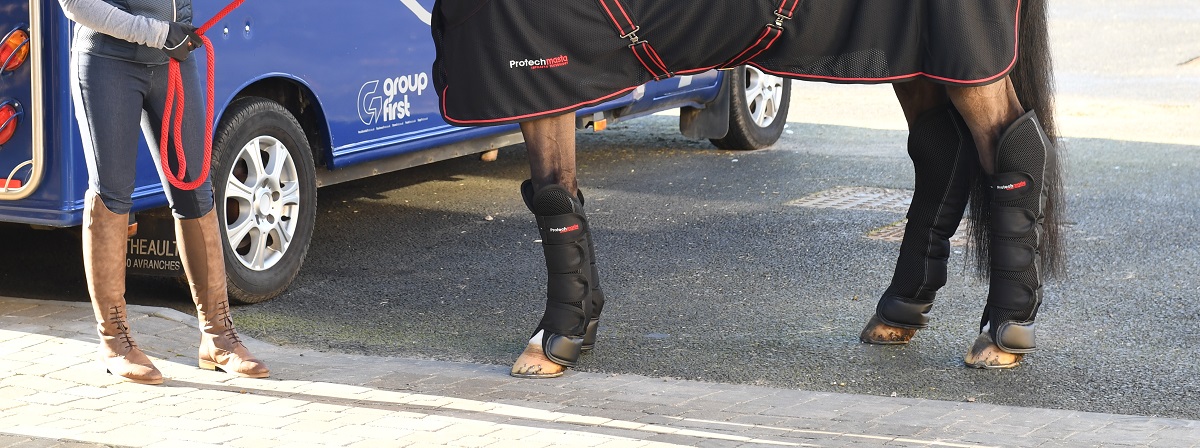
Travelling safely with your horse during the hot summer months.
Regardless of fitness levels, careful planning is required for horses that are travelling during hot and humid conditions. Horses need a degree of acclimatization to help mitigate the impact of heat during transportation and during competition. We asked Sandie Chambers for five top tips for travelling safely in the heat:
How to prevent heat stress when travelling during hot summer months:
Research studies have shown that horses can become fluid deficient after a period of transportation and this deficit is especially high during hot and humid conditions. It is therefore essential to maintain fluid and daily electrolyte balance for successful adaption to the hot environment and before the commencement of travel. Electrolytes should be part of a horse’s daily diet and not just before travel or competition. Each horse will use what is required and excrete what is not. Extra electrolytes may be necessary along with sufficient water during sweltering conditions and especially if the horses are sweating, but be careful not to add too much electrolyte, as this could result in disturbing the hindgut or putting them off their feed.
Preventing dehydration when travelling:
Research has shown that dehydration of 2 to 3% of a horse’s body weight, impedes temperature regulation and exercise performance. It is therefore vital that the horse’s hydration levels are correct prior to the onset of travel and are maintained during transportation. Rest stops should be part of the journey, plan to check and maintain fluid intake at regular intervals. Training horses to drink fluids at rest stops can help to reduce fluid loss.
Keep the lorry cool:
The use of fans, open windows or air vents during transportation can be used to cool your horse and regular applications of cool water onto the body (sponging of water) will reduce the rate at which heat is stored. There may be an increase in resting respiratory rate in horses during the transition from their typical environment to loading and traveling and especially for horses that are transitioning from temperate climates to hot environments. This increase will reflect their stress levels as well as the thermoregulatory role of the respiratory system. Regular checks of their heart rates at regular stops are therefore recommended using an HR monitor.
What should my horse travel in when it’s hot?
The application of rugs and bandages during transportation in hot, humid conditions is not recommended as applying rugs and leg bandages, during transit under hot conditions will impair heat dissipation mechanisms reducing the potential for evaporative heat loss.
However certain rugs may be applied before transport and post-transport when core temperatures are normal or back to normal. For example, the Protechmasta infrared properties will gently stimulate circulation before and post-transportation, helping to relax the horse before travel and help regulate the heart rate back to normal post transportation.
Travel boots that allow airflow and reduce the potential for tendon heating like the spacer air mesh Protechmasta travel boots are recommended for shock absorption and protection. Cold hosing limbs at regular intervals during transportation is also beneficial.
Keep a close eye on your horse:
You know your horse better than anyone, preparation before and close monitoring of horses during travel is essential for the prevention of hyperthermia which can result in heat exhaustion and heat stroke. Remember prevention is better than cure!
